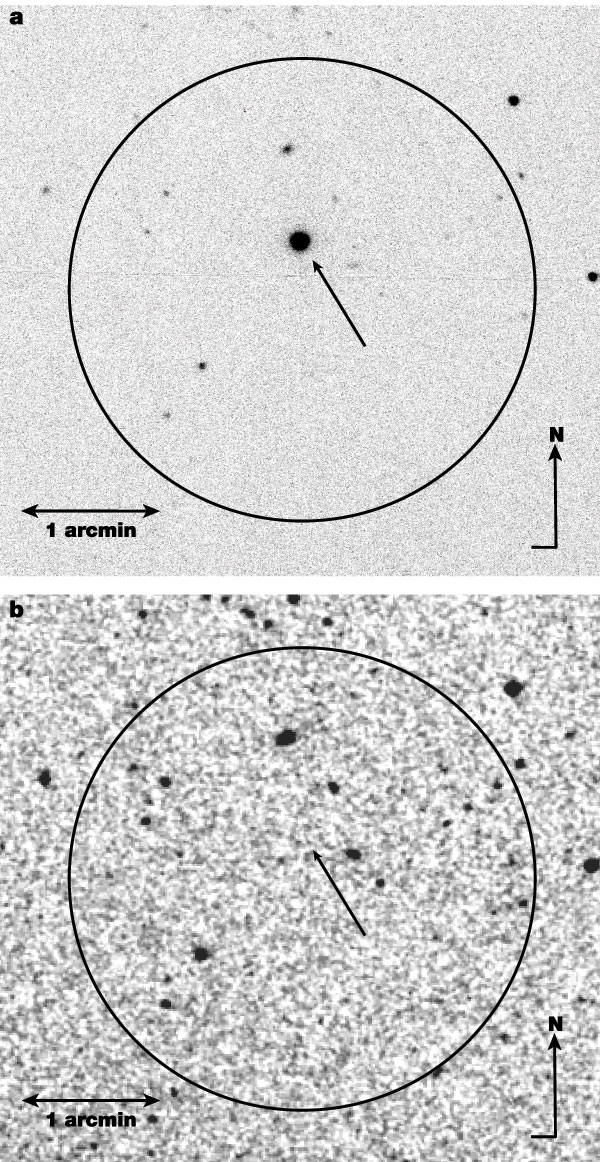
2. ELECTROMAGNETIC OBSERVATIONS
2.4 MULTI-WAVELENGTH AFTERGLOWS
2.4.1 OPTICAL TRANSIENT (OT)
Figure 2.4.1.1 illustrates the optical transient (OT) afterglow emission from GRB 030329 (Price et al. 2003). This 600s exposure photograph was taken through an R-filter using the Wide-Field Imager (WFI), an 8192x8192 pixel CCD mosaic camera, mounted upon a 40-inch Australian National University telescope of the Siding Spring Observatory (SSO). The image was taken at 13h5m UTC, 29 March 2003 (about 1.5 hours after the prompt g-ray emission), and was strongly affected by clouds. An RF-band comparison with the Second Digitized Sky Survey (DSS2) (shown in b) enabled the identification of a magnitude 12 afterglow (identified with the arrow) within the 4' HETE-II SXC error circle as shown in the both plates a and b. Using the The position of the USNO-A2.0 star catalog (USNO-A2.0 2004), the equatorial coordinates of the OT were determined to be aJ2000 = 10h44m59.s95, dJ2000 = +21o31'17.8", with an uncertainty of radius 0.5". This was later corrected to aJ2000 = 10h44m50.s002, dJ2000 = +21o31'17.84" (Price, private communication 2004).

FIGURE 2.4.1.1: Optical transient (OT) afterglow emission from GRB030329 (Price et al. 2003).